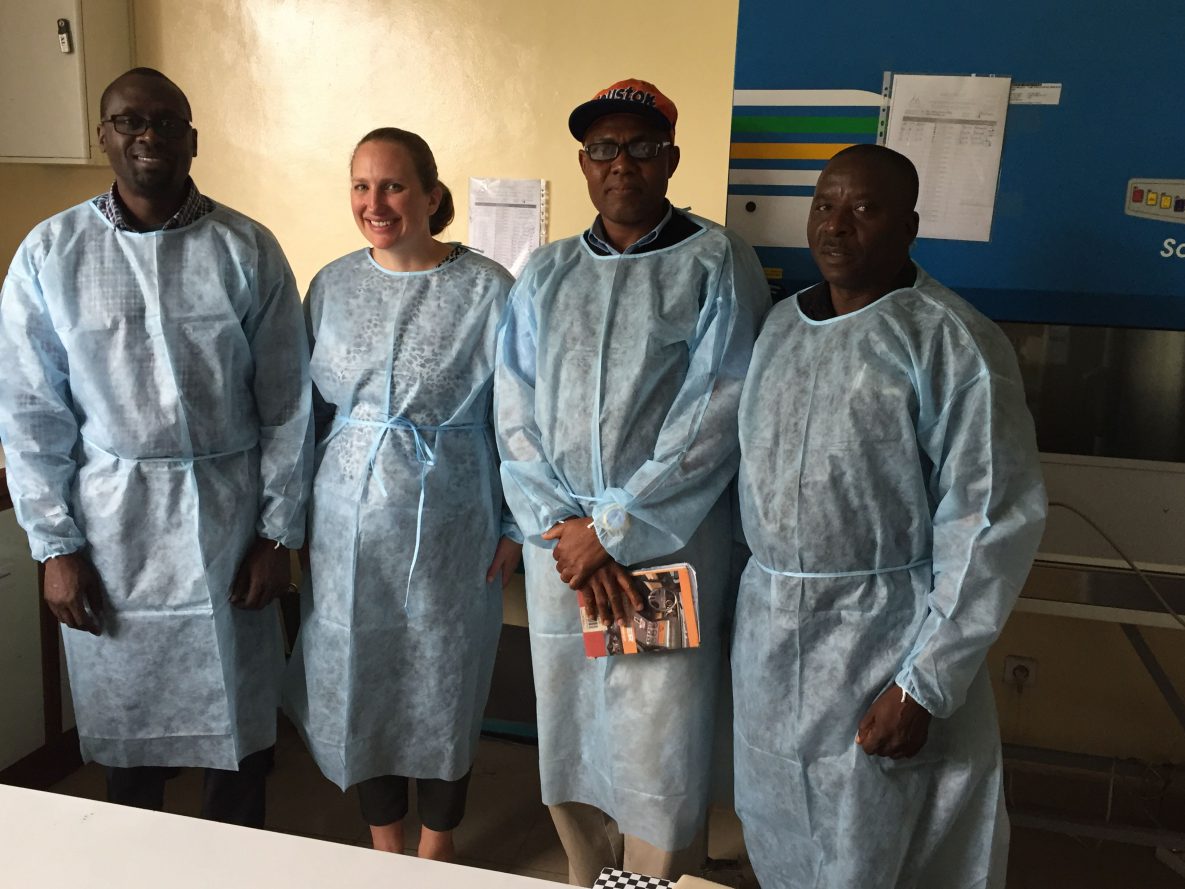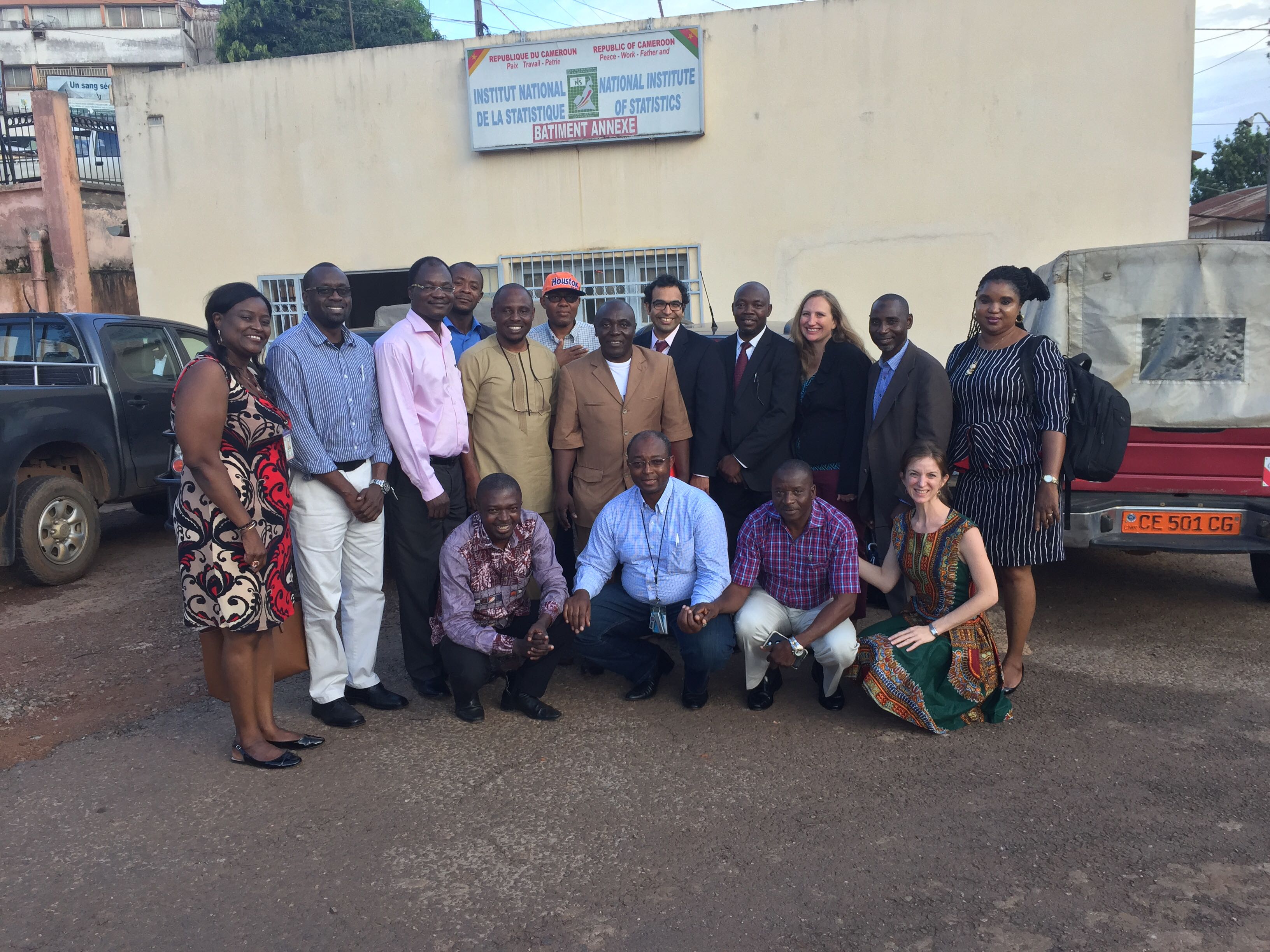Nigeria Studies Cameroon’s PHIA Implementation

Members of the Nigeria delegation in a group photograph with their Cameroonian counterparts at the CAMPHIA Central Store.
In order for the global community to measure progress toward UNAIDS’ 90-90-90 goals, data are needed on the impact of country-level HIV/AIDS programs. That’s why the Population-Based HIV Impact Assessments (PHIA) project is so important; these national surveys, in part, measure the reach and impact of HIV/AIDS programs in PEPFAR-supported countries. The findings of each PHIA survey can in turn be used to guide policy and funding priorities and can guide country programs toward epidemic control.

Members of the Nigeria delegation in a group photograph with their Cameroonian counterparts outside the Cameroon National Institute of Statistics.
As Nigeria prepares for the implementation of the Nigeria AIDS Indicator and Impact Assessment Survey (NAIIS): A Population-Based HIV Impact Assessment (PHIA) in 2018, a team from CDC Nigeria and HQ, along with partners from the federal Ministry of Health and the National Agency for the Control of AIDS, conducted a learning visit to Cameroon to gain insight and lessons learned from the implementation of its ongoing survey, known as CAMPHIA. The NAIIS will be a collaborative effort of PEPFAR, the government of Nigeria, and the Global Fund. It will provide an up-to-date snapshot of HIV in Nigeria as well as insight into setting targets for epidemic control in the country. Currently Nigeria has the highest number of people living with HIV in West Africa and the second-highest number in the world. This high burden, combined with a lack of reliable data about where the burden is focused, and from where new infections are coming, makes the NAIIS an urgent priority. This is the reason for the Nigeria team’s learning visit to its neighbor to the southeast.

Members of the Nigeria delegation in a group photograph with their Cameroonian counterparts outside the Cameroon National Institute of Statistics.
At the time of the visit, the Cameroon team was collecting data for CAMPHIA. The team’s process and progress precipitated the visit during which CDC Cameroon and HQ technical leads—along with the Ministry of Public Health, National Institute of Statistics, Central Public Health Laboratory, and survey field staff—provided support and training to the Nigeria team. The visitors had the opportunity to visit the CAMPHIA warehouse, the central lab and satellite labs, and field teams as they were collecting data from households. They saw how the PHIA methods worked on the ground in real-time. The visitors gained solid understanding of practicalities, such as the need for collaborative staff training and a robust communication and community mobilization strategy. They also learned about meaningful collaboration with the Embassy on necessities including security in the field and beginning the clearance steps for commodities and equipment early in the process. The Cameroon teams also demonstrated the importance of establishing a collaborative technical decision-making process to engage and create buy-in from all stakeholders.
The visitors also learned valuable lessons on the critical functions of, and requirements for, central and satellite laboratories. The Cameroon team demonstrated how to make use of accessible geographic information Sytems (GIS) to reduce the number of laboratories utilized, to map the geographic area canvassed by survey representatives (enumeration areas ([EAs]), and to conduct road distance analysis between EAs and satellite labs. Cameroon was able to provide broad insight on laboratory roles, responsibilities, and associated workloads in PHIA surveys. It also provided advanced insight into the importance of a robust data management system and the need for real-time data monitoring to ensure strong data collection and to manage field teams. They also learned about the need for a real-time supplies, logistics, and an inventory management system.
Ultimately the visit was a tremendous opportunity for useful cross-training between country programs based on real-world experiences. Given the size and complexity of Nigeria’s upcoming survey, these insights are critical to ensuring that this very important data collection and analysis activity is implemented effectively.